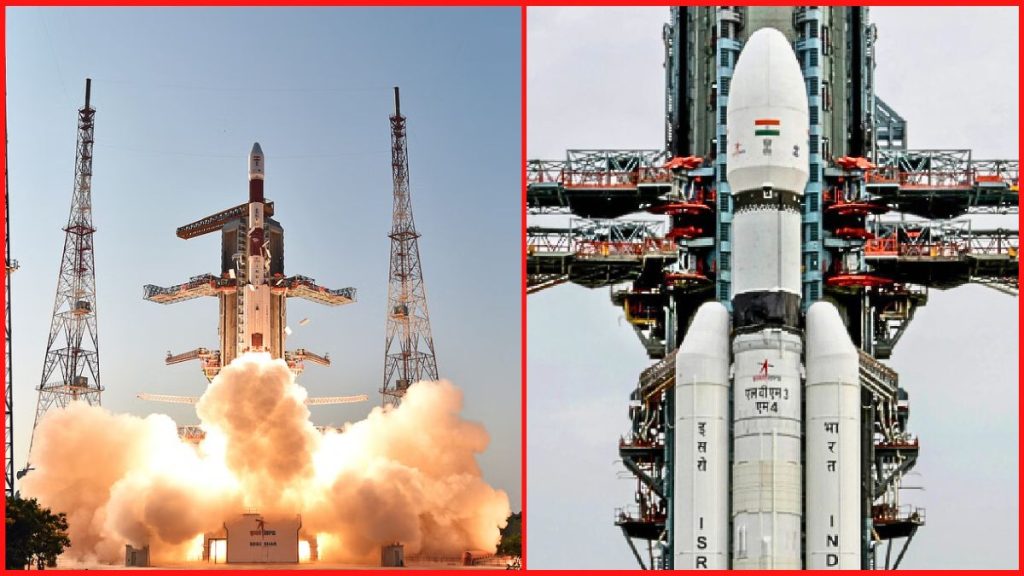New Delhi: As India’s space agency, the Indian Space Research Organisation (ISRO), gears up for its Chandrayaan-3 mission, one of the most intricate tasks it faces is the final lunar landing, a feat that requires transitioning the spacecraft from a horizontal trajectory at a speed of around 6,048 kilometers per hour (1.68 km/s) to a vertical orientation, and ultimately bringing it to a soft halt on the Moon’s surface, all within an astonishingly tight margin.
This challenging maneuver has been highlighted as the “most critical task” by ISRO Chief S Somanath.
Speaking at a talk hosted by the non-profit organization Disha Bharat, Somanath emphasized the complexity of transferring the spacecraft’s trajectory from horizontal to vertical—a crucial phase where Chandrayaan-2 had encountered difficulties. He noted that this transition demands finesse and precision to ensure a successful landing, particularly after ISRO’s previous attempt faced setbacks during the Chandrayaan-2 mission.
The maneuver to reorient nto a vertical position involves a meticulous sequence of steps to achieve a controlled and safe lunar touchdown. The process is further compounded by the imperative to minimize fuel consumption, execute accurate distance calculations, and ensure the flawless functioning of onboard algorithms.
Specifications for Vikram Lander’s Landing:
– Maximum Mass at Lunar Touchdown: 800 kg
– Vertical Velocity: ≤ 2 m/sec
– Horizontal Velocity: ≤ 0.5 m/sec
– Slope: ≤ 12 degrees
Notable Touchdown Test Limits for Vikram Lander:
– Vertical Velocity: ≤ 3.0 m/sec (10.8 km/hr)
– Horizontal Velocity: ≤ 1.0 m/sec
– Slope: ≤ 12 degrees
Chandrayaan-3 Mission Milestones: An Elaborate Timeline
– July 6: ISRO reveals Chandrayaan-3’s launch date of July 14 from Sriharikota’s second pad.
– July 7: Successful completion of vehicle electrical tests.
– July 11: Comprehensive 24-hour ‘Launch Rehearsal’ simulating the entire launch process concludes.
– July 14: LVM3 M4 vehicle propels Chandrayaan-3 into its designated orbit.
– July 15: Successful execution of the first orbit-raising maneuver, reaching 41762 km x 173 km orbit.
– July 17: Second orbit-raising maneuver positions Chandrayaan-3 at 41603 km x 226 km orbit.
– July 22: Fourth orbit-raising maneuver places the spacecraft in 71351 km x 233 km orbit.
– July 25: Yet another successful orbit-raising maneuver.
– August 1: Chandrayaan-3 inserted into translunar orbit (288 km x 369328 km).
– August 5: Successful lunar orbit insertion (164 km x 18074 km).
– August 6: Lunar orbit lowered to 170 km x 4,313 km.
– August 9: ISRO cautiously adjusts the spacecraft’s orbit lower around the moon, achieving a lunar orbit of 174 km x 1437 km.
– August 14: Another controlled maneuver brings Chandrayaan-3 closer to the moon’s surface.
– August 16: The landing module, comprising the Vikram lander and Pragyan rover, disengages from its propulsion system as the spacecraft approaches around 100*100 km lunar orbit.
– August 18: Chandrayaan-3 undertakes a final orbit adjustment, narrowing it down to approximately 100*30 km—its farthest and nearest points from the moon, respectively.
– August 23: If all goes as planned, a lunar touchdown is aimed at 5:47 pm, with the spacecraft covering the last 30 km distance.
However, ISRO has mentioned that lunar conditions might necessitate rescheduling of the mission for September.

